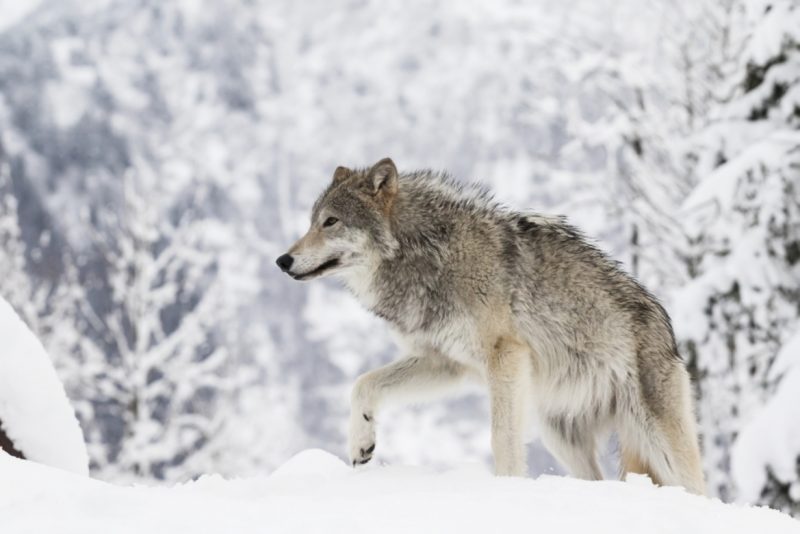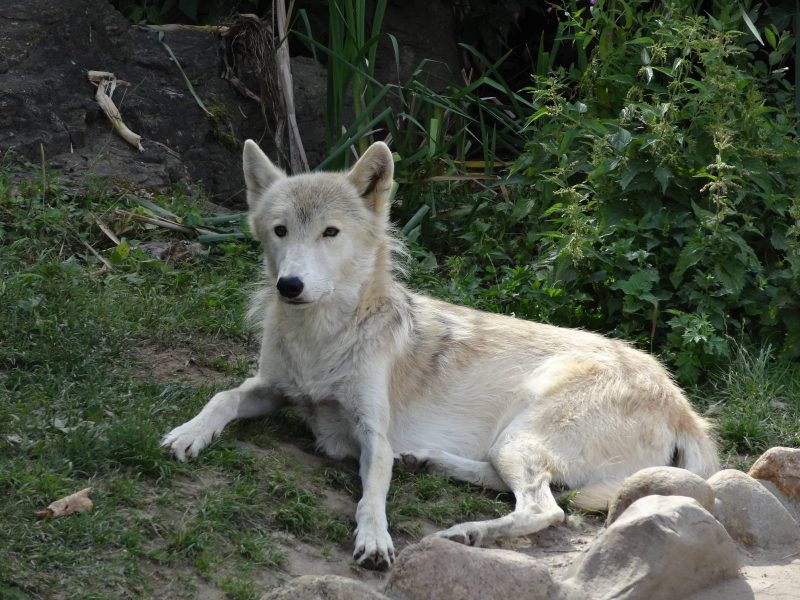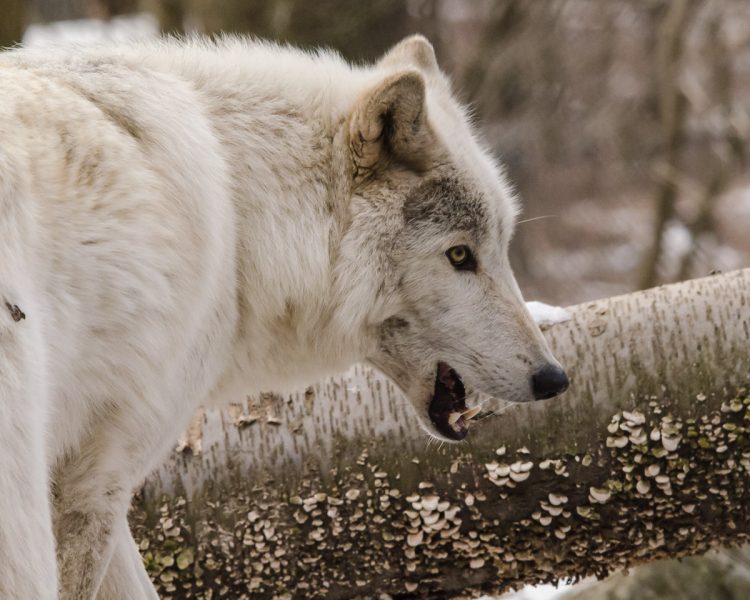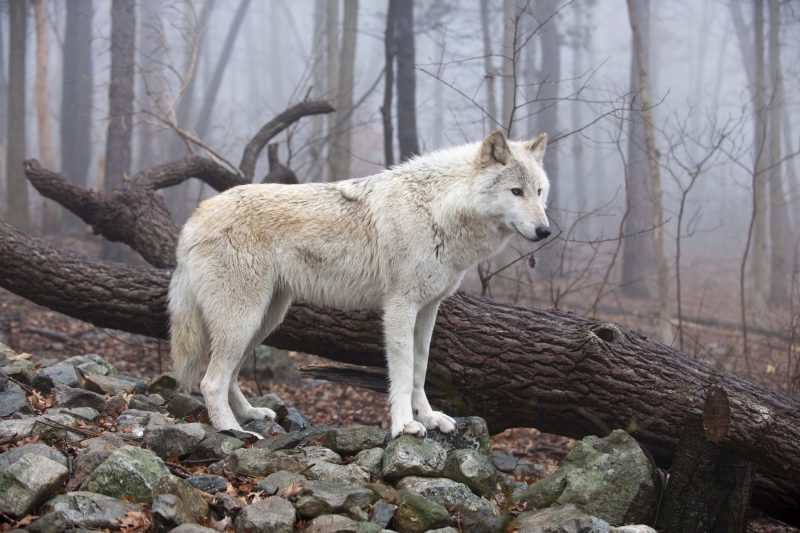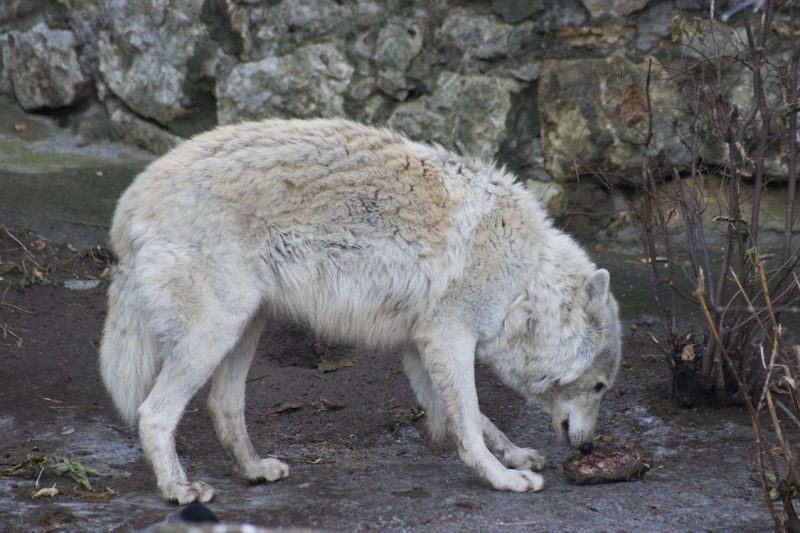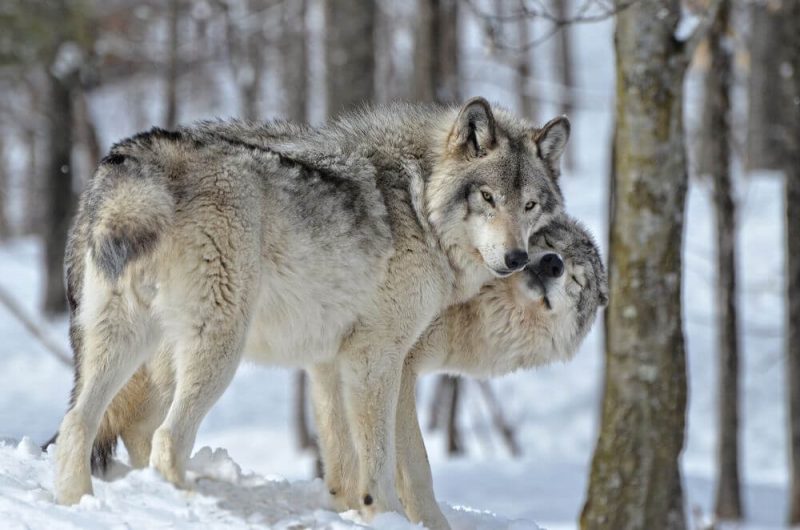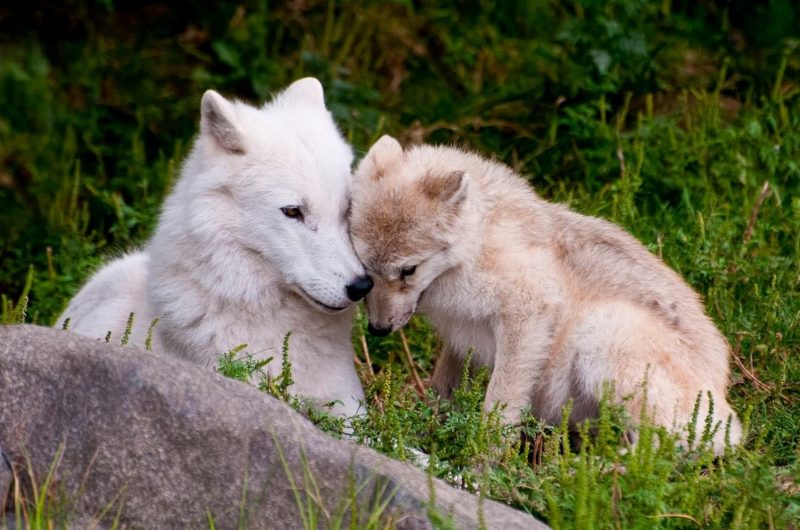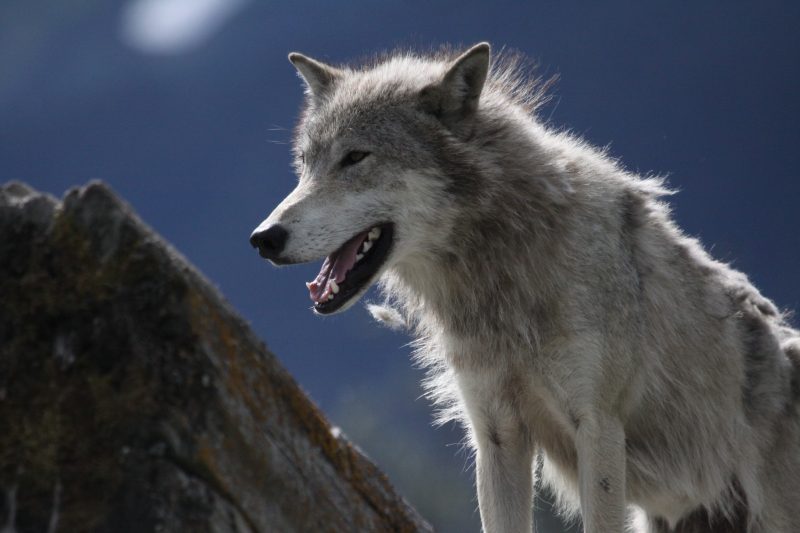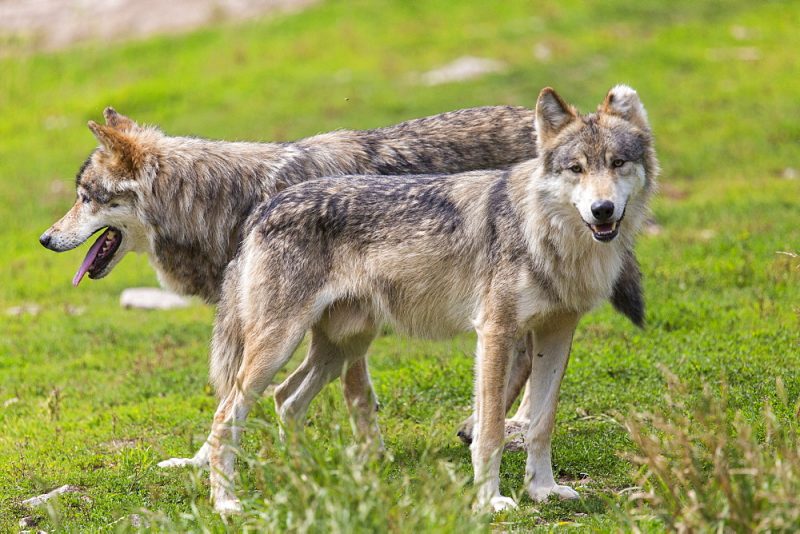The wolf is an animal known to man since childhood thanks to folk tales. In them, predators seemed insidious and bloodthirsty, and most importantly - they always had a gray color. But the magnificent tundra wolf, living in the northern latitudes, differs from its relatives.
Material Content:
Description of the Tundra Wolf
The tundra (tundra) wolf (Canis lupus) refers to the subspecies of its closest brother - the common wolf.
These animals reach quite large sizes. Males can grow up to 119-137 cm with a weight of 40-49 kg. Females are smaller - 113-136 cm, weighing 36-41 kg. The length of the tail can be 41-52 cm. These animals are also called polar wolves.
The fur of tundra animals is long, fluffy and thick. It consists of soft undercoat and main coat. The color of the upper cover is usually light gray or off-white, the undercoat is divided into two color zones - reddish-gray and dark gray.
The color of the wolf coat varies depending on the season: from November to February, wolves are much darker than in spring, and in summer the coat fades at all, making the predator very light.
Habitat and lifestyle
As the name of the animal can easily guess, the white tundra wolf lives on the territory of the tundra part of Russia, stretching from Kamchatka to the Kola Peninsula. For the most part, these animals prefer to live on the plains, but can live on the coast of the North Seas or in the taiga.
Tundra wolves do not live in one place, especially in winter. These animals move after their prey, for example, with the onset of cold weather chasing swarms of deer.
The tundra wolf is rightly considered an excellent hunter.These animals have a great sense of smell, hearing and vision. Predators hunt in packs, while each of its members performs its task. Some wolves assume the function of attackers, others - beaters. In pursuit of prey, white wolves move in a single chain. At the same time, each of them is trying to get his paw into the tracks left by a member of the pack going ahead. Such tricks perplex inexperienced trackers. The latter are sure that only one predator followed along the way.
Out of hunting, wolves also try to stay in groups. Each of them, as a rule, includes a mature dominant couple and young individuals. Sometimes animals from other schools are found in such groups. Usually they occupy the position of subordinates. Laws from the north are harsh - large flocks cannot feed here. For this reason, in small groups, only representatives of the dominant couple become parents. If one of the members of the group wishes to acquire offspring, he must leave the pack, later forming his own family.
The main enemy of tundra wolves is man. These animals have few natural opponents. Occasionally, a wolf is attacked by a wolverine or a bear, but this does not happen too often.
It is interesting. On the expanses of the tundra, wolves can communicate with each other using a variety of sounds.
Scientists have established several methods for the interaction of these animals with each other: distant and contact. The latter involves the use in case of close contact of the wolf with relatives and includes snorting, growling, screeching and whining. Such communication helps to warn of danger or aggression, friendliness emanating from another wolf. To the distant variety of communication is howling - with its help, wolves give each other alarming signals or warn of the approach of a stranger. These sounds are carried within a radius of several kilometers around.
Predators can communicate with gestures. For example, the movement of the tail in different directions, as well as the pressed ears, can signal a friendly mood of a predator. The wool raised on the scruff of the neck and the malicious grin, on the contrary, alludes to aggression. Falling on his back and opening his abdomen, the wolf shows that it obeys a stronger relative.
What the predator eats
Mainland polar wolves live by hunting.
The following foods are included in their diet:
- Reindeer. Large mammal weighing from a centner to two. As a rule, young, recently born individuals become prey to the tundra wolves.
- White hare. Its spectacular disguise from predators in the snow does not always save adults and young animals from the attack of polar wolves.
- Grouse. The bird inhabiting the taiga and tundra. In winter, these birds change their brown plumage to white, spending the night under a layer of snow. Together with hares, deer and Siberian lemmings make up the diet of wolves.
Tundra wolves can also feed on pasture. Finding themselves in the zone of the sea coast, these predators become scavengers - their diet consists of the corpses of marine fish, mammals and invertebrates.
Breeding wolves
Arctic wolves are by nature monogamous, that is, finding a mate, remain faithful to life. The mating season in animals lasts from March to April. At the same time, young predators are separated from the pack and spend time exclusively in each other's company.
Two months later, 4-6 deaf, blind and helpless puppies are born. Parents take care of the heirs together. The average lifespan of a wolf in nature is about 10 years.
Interesting facts about the animal
Many years of observing the amazing tundra predators made it possible to highlight several interesting facts about their life:
- The largest representatives of the tundra wolves live in the north of Eurasia and America. These males are capable of reaching more than 80 kg.
- An adult male can reach speeds of up to 65 km / h and jump in length up to 5 m.
- A hungry tundra wolf can eat about 20 kg of food at a time.
- In a moving pack it is not difficult to distinguish a leader; his tail is always raised. For the rest of the pack, they are always directed down.
- Of the total number of cubs born, only half survive. The remainder becomes a victim of bears, wolverines, and also dies from harsh climatic conditions and lack of food.
- Puppies who have reached the age of one year are called profitable, from 1 year to 2 years they are called wolves.
Tundra wolves living in the northern latitudes are the closest relatives of forest predators. These animals keep in small flocks, hunting and migrating. The harsh laws of the North left their mark on their habits, for example, the prohibition of offspring to all members of the pack except for the dominant pair.



